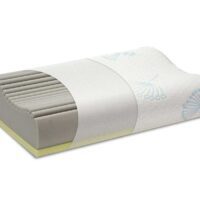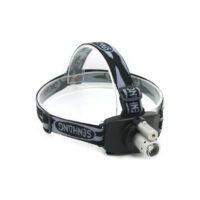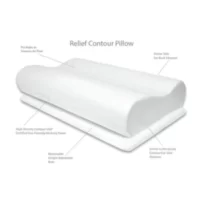Migraine
Article by John Miller

What is Migraine?
Migraine is a chronic disorder that affects the nervous system. It features recurring episodes of severe head pain and other related symptoms.
Migraine Symptoms
People with migraines usually experience pain on just one side of the head. The pain often feels like a throbbing ache, ranging from moderate to severe intensity. This discomfort frequently leads people to avoid daily activities, such as going to work or school.
Along with head pain, sufferers often experience:
- Nausea
- Sensitivity to light (photophobia)
- Sensitivity to noise (phonophobia)
Migraine episodes can last from four hours to, in extreme instances, three days.
What is Migraine with Aura?
Some people experience a phenomenon known as aura before a migraine begins. Auras include a mix of visual, sensory, and sometimes motor disturbances. All these symptoms are temporary and can show up to an hour before the migraine starts.
Visual symptoms might involve seeing spots or flashes of light. Sensory signs often include tingling or numbness. For motor symptoms, people might experience dizziness or speech issues.
What Causes Migraine?
The exact cause of migraines remains uncertain. One theory suggests that a process called cortical spreading depression may be responsible. In this process, a wave of reduced electrical activity moves across the brain’s grey matter. Certain cells then release substances that irritate brain stem nerves, triggering headaches.
Research identifies three main factors contributing to migraines:
- Pain-inducing structures in the head
- Pain-inducing structures in the neck
- The chemical serotonin
These factors may combine differently to produce the various forms of migraine and headaches. The range of symptoms among different types of headaches complicates diagnosis.
Signs and Symptoms of Migraine
Several indicators help in diagnosing migraines:
- Attacks lasting from 4 to 72 hours
- One-sided, shifting, or pulsating headaches
- Moderate to severe pain hindering daily activities
- Worsening of symptoms due to physical activity
- Sensitivity to light and sound
- Nausea and/or vomiting
- Vision disturbances or aura, usually preceding the migraine
Migraine manifests differently for each individual. So, your treatment should also be tailored to you. For professional advice, consult your healthcare provider.
How to Diagnose Migraine
To avoid misdiagnosis, it’s crucial to observe more than one symptom. Remember, not all criteria must be met for a migraine diagnosis. A General Practitioner (GP) can direct you to a Neurologist specialising in migraines for more focused care.
Specific information
Rochedale - Call 38410277
Book Online: RochedaleSalisbury - Call 32751044
Book Online: SalisburySandgate - Call 32691122
Book Online: Sandgate 

Article by Matthew Hewitt
Headache Causes
Headaches and migraines, unfortunately common, can greatly affect our lives. Understanding their types and causes is key to effective management and treatment.
Headaches and migraines can stem from a variety of factors. These include conditions related to the neck and jaw. Some specific types you might experience are neck, tension, cluster, and migraines.
Neck-related issues like neck pain, facet dysfunction, and pinched nerves can also lead to headaches. Additionally, jaw conditions such as TMJ pain and dysfunction can cause jaw headaches.
Headache Symptoms Differ
Identifying a headache's location, duration, and intensity can help pinpoint potential causes and effective treatments. This information isn't definitive but helps distinguish possible headache or migraine types.
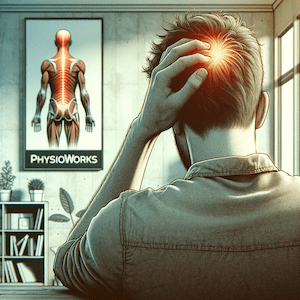

Common Headache Types
Tension-Type Headaches
Tension-type headaches usually feel like a band across the forehead, extending into the neck. They are continuous, non-pulsating, and may be accompanied by neck or shoulder tenderness, but not nausea or increased sensory sensitivity.
Jaw Headache
TMJ or jaw-related headaches are localised around the jaw and ear, affecting one side. They often come with jaw movement issues, chewing difficulties, or sensations of clicking, locking, and catching in the jaw. TMJ physiotherapists and your dentist are good practitioners to start with to assess and treat your TMJ headache.
Neck Headache
Neck headaches (cervicogenic headaches) are typically a steady, non-throbbing pain at the skull's base, around one eye, or over the top of the head. They may also involve limited neck mobility, but this is not essential. your physiotherapist is best person to see for assessing and relieving your neck headache.
Cluster Headache
Cluster headaches are intensely concentrated around one eye. Accompanying symptoms can include a runny nose, drooping or reddened eye, or increased facial perspiration.
Concussion Headache
Concussion-related headaches resemble migraines with a throbbing sensation and are closely linked to concussions. If these headaches worsen, or if symptoms like slurred speech, seizures, or unusual behaviour occur, seek medical attention immediately.
Sinus Headache
Sinus headaches are characterised by pain, pressure, or fullness from the sinuses, often worsening when bending forward or lying down. They can also cause toothache-like pain or nasal congestion.
Migraines
Migraines often affect one side of the head, involving the entire side of the head and face. They can occur with or without visual disturbances (aura) and include symptoms like nausea and sensitivity to light and noise.
In Conclusion
The causes of headaches and migraines vary, as do their treatments. Consult a healthcare practitioner such as your physiotherapist or doctor for accurate diagnosis and tailored treatment plans. Understanding these differences is essential for effective headache management and relief.
General Information
- Migraine vs Headache
- Specific Migraine - Headache Types
- Neck Headache
- Tension Headache
- Cluster Headaches
- Migraine
- Vestibular Migraine
- TMJ Headache
- Concussion
Headache FAQs
Rochedale - Call 38410277
Book Online: RochedaleSalisbury - Call 32751044
Book Online: SalisburySandgate - Call 32691122
Book Online: SandgateArticle by John Miller
Severe Headache Symptoms
When Should You Worry About a Headache?
Experiencing a headache can range from a mild inconvenience to a warning sign of a serious health issue. It's important to distinguish between common headaches and those that require immediate attention. In this comprehensive guide, we'll explore the severe headache symptoms, the latest research, and the effective role of physiotherapy in headache management.
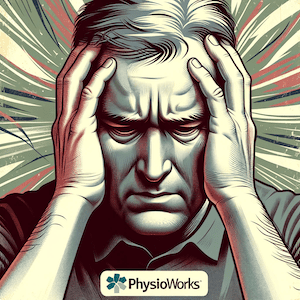

Severe Headache Causes and Identifying Red Flags
A headache can range from a mild, occasional annoyance to a symptom of a severe health condition. Recognising the red flags is crucial for timely intervention. The causes of severe headaches can include brain tumours, aneurysms, strokes, meningitis, and other systemic illnesses. If your headache presents with the following features, it's time to seek medical advice:
- Unprecedented Severity: The worst headache you’ve ever had or a type that's different from your usual ones.
- Triggered by Exertion: Includes headaches induced by exercise, coughing, sneezing, or sexual activity.
- Age-Related Concerns: Especially if you’re over 50 years old.
- Persistent Despite Treatment: When headaches don’t subside even after standard treatment.
- Sudden Onset: A headache that appears abruptly and intensely.
- Neurological Symptoms: Includes motor weakness, memory loss, or slurred speech.
- Compromised Immune System: Particularly in individuals with HIV or similar conditions.
- Accompanied by Systemic Symptoms: Such as fever, weight loss, or a rash.
Latest Research in Headache Management
Recent studies emphasise the role of physiotherapy plays in managing headaches, especially tension-type headaches, TMJ headaches and cervicogenic headaches.
Techniques like manual therapy, postural correction, and specific exercises can significantly reduce the frequency and intensity of these headaches.
Physiotherapy's Role in Headache Management
As physiotherapists, we focus on identifying and treating the physical factors contributing to headaches. This approach may include:
- Postural Analysis and Correction: Poor posture can lead to tension-type headaches.
- Manual Therapy: Techniques like soft tissue work and joint mobilisation can relieve headache symptoms.
- Exercise Therapy: Tailored exercises to strengthen and relax the muscles around the neck and shoulders.
- Education and Lifestyle Changes: Advice on ergonomics, relaxation techniques, and hydration.
Less Urgent and Severe Headache Types
Not all headaches are indicative of a severe condition. Common types such as migraines, tension-type headaches, and cluster headaches, while distressing and disruptive, often don't signal underlying diseases. These headaches typically respond positively to a combination of medication, physiotherapy, and lifestyle adjustments.
Migraines, characterised by intense, throbbing pain often on one side of the head, can persist for hours or even days. They may be accompanied by sensitivity to light and sound, and at times, nausea. Migraines are multifaceted and can be triggered by various factors, including stress, hormonal fluctuations, or certain foods and drinks.
Tension-type headaches are the most common. They generally feel like a constant ache or pressure around the forehead, temples, or back of the head and neck. Often linked to stress or poor posture, these headaches can last from minutes to days.
Cluster headaches are rarer but can be excruciatingly painful. Occurring in cyclical patterns or clusters, these headaches are marked by intense burning or piercing pain behind or around one eye. They can be so severe that they're sometimes referred to as 'suicide headaches.'
Despite their severity, these types of headaches usually don't originate from serious medical conditions. They respond well to a holistic approach:
- Medication: Over-the-counter pain relievers are often effective. For frequent or severe migraines, prescription medications may be necessary.
- Physiotherapy: This plays a crucial role, especially for tension-type and cervicogenic headaches. Physiotherapists employ techniques like manual therapy, specific exercises, and advice on posture and ergonomics to alleviate pain and prevent recurrence.
- Lifestyle Modifications: Simple lifestyle changes can significantly help. Regular physical activity, adequate hydration, sufficient sleep, stress management, and dietary modifications can aid in managing and reducing the frequency of these headaches.
Understanding these less severe types of headaches is key to effective management. While they may not indicate a severe health issue, their impact on life quality can be substantial. Through a combination of medical, physiotherapeutic, and lifestyle interventions, individuals suffering from these headaches can achieve relief and enhance their daily lives.
What to Do? Seeking Professional Advice
If you're experiencing any red flag symptoms or are concerned about your headaches, it's crucial to consult with a doctor. A physiotherapist can offer a comprehensive assessment and create a tailored treatment plan to address your specific needs. They can also work in conjunction with your doctor to ensure a holistic approach to your headache management.
Conclusion
Understanding the signs of a severe headache and seeking timely professional advice is vital for your health. While many headaches are benign and manageable, always pay attention to the red flags. With the help of physiotherapy and medical intervention, most headaches can be effectively treated, allowing you to return to your normal life.
For more detailed information and specific advice, visit PhysioWorks, where you can find a wealth of resources on headache management and physiotherapy treatments.
Remember: When in doubt, always consult your doctor or a physiotherapist to ensure the best care for your health.
More info:
Rochedale - Call 38410277
Book Online: RochedaleSalisbury - Call 32751044
Book Online: SalisburySandgate - Call 32691122
Book Online: SandgateArticle by John Miller
Experiencing a Headache or Migraine?
Understand Your Options
Headaches and migraines are more than just a nuisance; they can significantly disrupt your daily life. When you start experiencing these symptoms, it's imperative to seek medical advice. Doctors often recommend neurological assessments and may suggest a CT or MRI scan. These scans are vital for excluding serious conditions like aneurysms or tumours. Most of the time, fortunately, the results are normal.
What to Do When Your Scans Are Clear
Getting a clear scan result brings a sigh of relief, eliminating concerns about serious underlying causes. Yet, the task of identifying the source of your headaches or migraines remains.
Identifying the Root Cause of Your Headache
At PhysioWorks, we understand that diagnosing the root cause of headaches is a key step in treatment. We primarily focus on three types of headaches:


Understanding Neck-Related Headaches
Researchers feel that about one in four headaches is linked to neck issues. A thorough neck examination by a skilled headache physiotherapist is crucial. In many cases, the physiotherapist can diagnose and begin treating your neck headache from the first consultation.
Neck Headache: A Deeper Insight
Neck headaches, or cervicogenic headaches, often originate from neck joints, muscles, or ligaments. Symptoms include pain starting at the back of the head, radiating forwards, neck stiffness, and sometimes shoulder or arm pain. Physiotherapy techniques like manual therapy, specific exercises, and posture correction can provide significant relief.
Related article: Neck Headaches
Tension-Type Headaches: Understanding and Management
Tension-type headaches, marked by a band-like pain around the head, are frequently associated with stress, poor posture, and muscular tension. Physiotherapy plays a critical role in managing these headaches, offering stress-reduction techniques, ergonomic advice, and exercises to improve posture and muscle function.
Related article: Tension-Type Headaches
TMJ Headaches: The Role of Physiotherapy
TMJ headaches, stemming from jaw joint and muscle issues, present symptoms like facial pain, jaw clicking, and chewing difficulties. Physiotherapists, with a skillset in jaw disorders, offer specialised exercises, manual therapy, and advice to improve jaw function.
Related article: TMJ headaches
Latest Research and Developments
Recent studies underscore the effectiveness of physiotherapy in headache management. Techniques such as dry needling, acupuncture, specific neck and shoulder exercises, posture correction, and relaxation strategies have shown promise in reducing the frequency and intensity of headaches.
Conclusion: Seeking Professional Help
Managing headaches and migraines often requires a targeted approach. Physiotherapy offers a range of treatments customised to your needs. If headaches or migraines are affecting your life, consider consulting a qualified headache physiotherapist. This could be a significant step towards a pain-free life. However, always start with a doctor's consultation to exclude any serious underlying conditions.
Call to Action: Consult a Professional
Don't let headaches dictate your life. Reach out to a headache physiotherapist or your doctor today to embark on your journey to recovery and improved quality of life. Remember, investing in your health is paramount.
What to Do? Seek Professional Advice from Your Physiotherapist
If you're struggling with headaches or migraines, the first step is to consult a physiotherapist specialised in headache management. They can provide a comprehensive assessment and tailor a treatment plan suited to your specific needs, incorporating the latest research and techniques. Booking a consultation can be your first step towards finding relief and regaining control of your life.
Rochedale - Call 38410277
Book Online: RochedaleSalisbury - Call 32751044
Book Online: SalisburySandgate - Call 32691122
Book Online: SandgateRelated Articles
- Neck Headache - This page provides an in-depth look at the causes, symptoms, and treatment options for neck-related headaches, which are often a result of issues with the neck joints, muscles, or ligaments.
- TMJ Headache - Readers will find information on how TMJ disorders can lead to headaches, including symptoms, diagnosis, and treatment options for jaw-related headache issues.
- Tension Headache Relief: Symptoms, Diagnosis, And Treatment: Offers insights into tension-type headaches, including their causes, symptoms, and how physiotherapy can play a crucial role in managing these headaches.
- Migraine - Provides an overview of migraines, discussing their impact, the importance of medical advice, and physiotherapy's role in managing migraine symptoms.
- Cluster Headaches - Understanding And Managing The Pain: This article explores the severe nature of cluster headaches, their symptoms, and the potential for physiotherapy to aid in management and relief.
- Choosing The Right Pillow For Neck Support – Find Relief Now: Discusses how the right pillow can prevent neck pain and headaches, highlighting the importance of neck support for overall well-being.
Additional Information
For more details on specific headache types, migraine comparisons, and frequently asked questions, visit our website for comprehensive guides on:
























